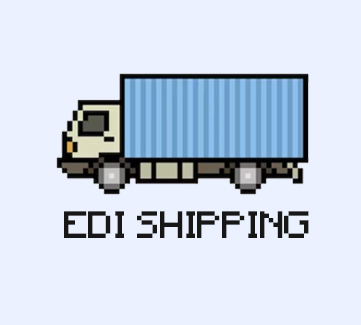In the fast-paced world of ecommerce, efficient and accurate shipping processes are paramount to success. Electronic Data Interchange (EDI) has emerged as a game-changer in the logistics and fulfillment landscape, offering ecommerce businesses a seamless way to streamline their shipping operations.
EDI Meaning in Shipping
EDI Shipping (Electronic Data Interchange Shipping) is a digital and automated communication process used in logistics and supply chain management. It involves the electronic exchange of standardized shipping and order-related information between different entities within the supply chain, such as manufacturers, suppliers, distributors, retailers, and logistics providers. EDI Shipping eliminates the need for manual data entry and paperwork by facilitating the seamless transmission of data in a structured and machine-readable format. This technology enhances the efficiency and accuracy of shipping processes, including order processing, inventory management, shipping label generation, and shipment tracking, ultimately improving overall supply chain management and customer satisfaction in various industries, particularly in ecommerce and retail.
Who Can Use It?
Ecommerce businesses of various sizes and across diverse industries can benefit from using EDI (Electronic Data Interchange) shipping. Whether you are a retailer selling consumer goods, a manufacturer distributing products, or a wholesaler managing bulk shipments, EDI can streamline your shipping processes. It’s particularly advantageous for businesses dealing with high order volumes, complex supply chains, and a need for real-time data exchange. From clothing retailers and electronics manufacturers to food distributors and automotive parts suppliers, EDI offers a versatile solution to enhance efficiency, reduce errors, and improve overall logistics management for a wide range of ecommerce operations. It will fit well whether if a business has warehouses in Europe, or warehouses in USA.
The Key Components of EDI Shipping
-
Order Processing
One of the primary functions of EDI in ecommerce shipping is the automated processing of orders. When a customer places an order on your ecommerce website, the order details are transmitted electronically to your order management system, eliminating the need for manual data entry. This not only saves time but also reduces the risk of errors in order processing.
-
Inventory Management
EDI enables real-time inventory tracking and management. It allows you to keep accurate records of stock levels, so you can avoid overselling products and maintain optimal inventory levels. This ensures that you can fulfill customer orders promptly and avoid stockouts or overstock situations.
-
Shipping Label Generation
With EDI, the process of generating shipping labels becomes streamlined. The system can automatically generate shipping labels with accurate shipping information, including the customer’s address, package weight, and shipping method. This reduces the chances of shipping errors and ensures timely final mile delivery.
-
Shipment Tracking
Customers today expect transparency and visibility into their order status. EDI provides real-time tracking information, allowing customers to track their shipments from the moment they are dispatched until they arrive at their doorstep. This enhances the customer experience and reduces the burden on customer service teams.
The Benefits of Implementing EDI Shipping
-
Increased Efficiency
Efficiency is at the heart of EDI shipping. By automating order processing, inventory management, and shipping label generation, you can save time and reduce operational costs. This increased efficiency enables you to process orders faster and fulfill customer expectations more effectively.
-
Error Reduction
Manual data entry is prone to errors, which can lead to shipping mistakes, customer complaints, and returns. EDI eliminates these errors by automating data exchange, ensuring that accurate information is shared between systems and partners.
-
Improved Customer Experience
Customers value prompt and accurate order fulfillment. EDI not only helps you meet customer expectations but also provides real-time last mile delivery tracking information, giving customers the confidence that their orders are on their way.
-
Scalability
As your ecommerce business grows, so do your shipping needs. EDI systems are highly scalable, making it easier to handle increased order volumes without compromising efficiency or accuracy.
Implementing EDI Shipping
To implement EDI shipping successfully in your ecommerce business, consider the following steps:
- Assess Your Needs: Identify the specific areas of your shipping and fulfillment process that can benefit from automation through EDI.
- Choose a Provider: Select an EDI service provider that aligns with your business requirements and offers support for ecommerce integrations.
- Integration: Integrate your ecommerce platform, order management system, and other relevant systems with the chosen EDI solution.
- Testing: Thoroughly test the EDI integration to ensure that data is accurately transferred between systems.
- Training: Train your staff to use the EDI system effectively, and ensure they understand the new workflow.
- Monitoring and Optimization: Continuously monitor the performance of your EDI system and look for opportunities to optimize your shipping processes further.
Final Thoughts
In the highly competitive world of ecommerce, staying ahead requires optimizing every aspect of your operations. EDI shipping is a powerful tool that can transform your shipping and fulfillment processes, leading to increased efficiency, reduced errors, and improved customer satisfaction. By embracing EDI, your ecommerce business can meet the demands of today’s online shoppers and position itself for growth in the future.



 Community
Community
